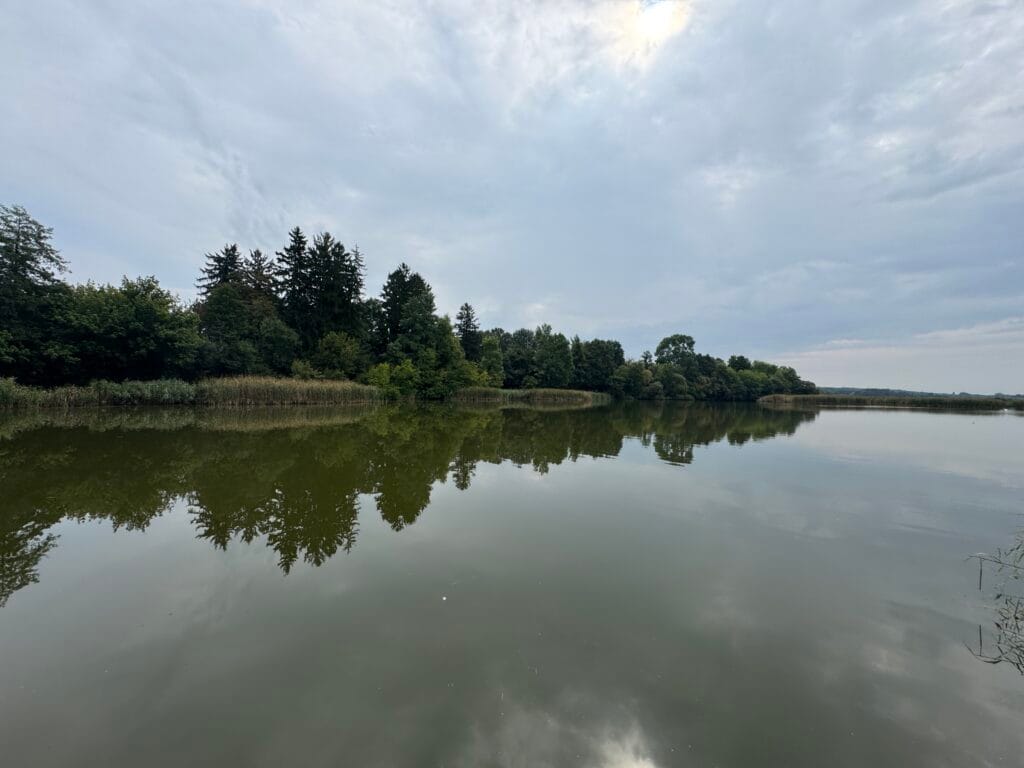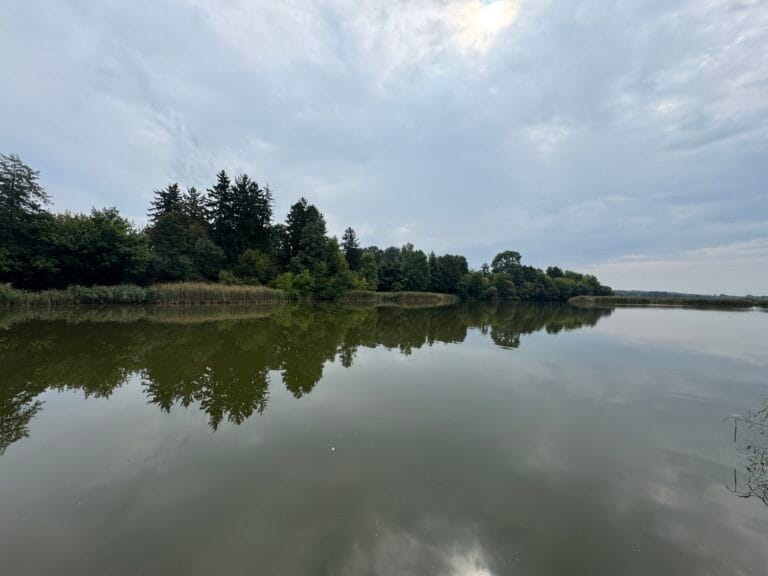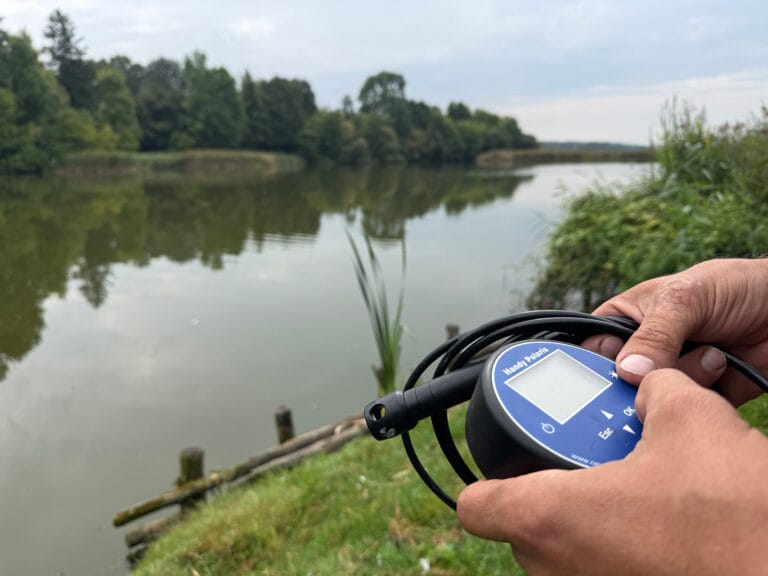Table of Contents
Introduction: When Nature Works for Us in the Lake
A new era has begun in sustainable carp farming – and this time, we are not talking about chemicals or artificial additives. The answer lies in nature itself: in beneficial microorganisms and probiotic fish feed, whose combined use can revolutionize biological fish farming.
But how does this work in practice? What happens in the pond when we introduce “good bacteria” not only into the sludge but also into the fish’s intestinal system?
This article presents how EM technology and probiotic feeding complement each other, and what results a fish farmer can expect when turning toward a natural, microbiology-based aquaculture system.
What Is EM Technology and Why Is It Important in Biological Fish Farming?
EM technology (Effective Microorganisms) is a mixture of beneficial microorganisms – such as lactic acid bacteria, phototrophic bacteria, and yeasts – that direct biological processes in the pond toward an oxidative/ aerobic direction.
This means that instead of putrefaction, fermentation begins, during which:
- toxic effects caused by gases such as H₂S and NH₃ are eliminated through electron-negativity
- the sludge layer becomes thinner,
- the fish survival rate increases, and
- the use of antibiotics decreases.
In addition, water quality becomes stable, algae growth decreases, and the sludge odor disappears – meaning that the fish not only survive but actually thrive in the pond.
Probiotic Fish Feed – Supporting the Fish from the Inside
While EM solution affects the pond environment and the fish’s natural food, EM itself is also a probiotic, and probiotic feed directly targets the fish’s body.
Our probiotic feeds contain:
- live microorganisms (e.g. Bacillus and Lactobacillus species),
- beneficial digestive enzymes, and
- fermented raw materials.
These improve the balance of the intestinal flora, support nutrient absorption, and strengthen the immune system.
According to research, fish consuming probiotics show:
- faster growth,
- fewer diseases,
- better feed conversion ratio (FCR), and
- reduced stress response during heat waves, transport, or water quality fluctuations.
The Two Together: External and Internal Protection
When a pond farmer applies EM technology in the water and, at the same time, feeds fish with probiotic feed, a biological defense system develops that supports the stock on several levels:
- In the water: stable ecosystem, reduced toxin load, better dissolved oxygen level.
- In the fish: stronger intestinal flora, better digestion, natural immunity.
The two systems do not cancel but rather strengthen each other – just as in natural ponds, where the cooperation of microorganisms maintains balance.
Practical Results in Biological Fish Farming
According to reports from farms combining EM technology and probiotic feeding:
- summer fish mortalities have completely disappeared,
- antibiotic use has decreased (in many places to zero),
- and carp growth has become more uniform.
Conclusion: The Aquaculture of the Future Is Living, Not Sterile
Nature has not created a sterile environment but a cooperating living system.
Successful fish farming today is not about “surviving the season” but about building a stable, healthy, and predictable pond environment – both outside and inside.
The combination of EM technology and probiotic fish feeding provides an effective, environmentally friendly, and economical alternative for achieving this goal.
Check out our related article on saving lakes from oxygen deficiency essential reading for healthier ponds and truly sustainable biological fish farming.
Source:
The content of this article is based on the professional study “Application of EM Microorganisms in Biological Fish Farming” by Balázs Kozák and on our own pond farming experiences.
This Hungarian publication is currently not available in foreign languages; therefore, we place special emphasis on making the knowledge and practical methods it contains accessible to pond farmers through our English blog articles.
Our goal is to make the knowledge of EM-based biological fish farming more widely available.
Interested in EM Technology for Your Own Pond?
If you’re inspired by the potential of EM technology and probiotic feeding, and would like to try it in your own pond, get in touch with us!
management@carphusbandry.com
Terminology Clarification Notes
- Oxidative / Aerobic processes
In this context, “oxidative direction” refers to biological processes taking place in the presence of oxygen. Therefore, the term “aerobic processes” can also be used to describe the same mechanism in aquaculture systems. - Electron-negativity / Redox potential
The reference to “electron-negativity” indicates the redox potential (oxidation-reduction balance) created by EM microorganisms, which helps neutralize toxic gases such as hydrogen sulfide (H₂S) and ammonia (NH₃). - Fermentation
Here, “fermentation” means beneficial microbial fermentation that replaces putrefaction processes in the pond environment. It refers to positive biological activity rather than decomposition. - Biological aquaculture
The term “biological fish production” can also be expressed as “biological aquaculture” or “eco-friendly aquaculture,” which are more commonly used in English literature when referring to microbiology-based or sustainable pond farming. - Pond aquaculture terminology
While “pond farmer” is understandable, more specific expressions such as “pond fish farmer” or “pond aquaculture operator” may sound more precise in professional English contexts. - Toxin load / Toxic burden
Both “toxin load” and “toxic burden” describe the level of toxic substances or stress in the aquatic environment. “Toxin load” is simpler and widely used at general professional levels. - Dissolved oxygen (DO) level
The phrase “dissolved oxygen level” is technically correct. In professional aquaculture materials, the abbreviation DO level is often used to denote oxygen concentration in the water.
The translation was prepared by ourselves, but we were not able to have it professionally proofread. If you find any inaccuracies or unclear wording, please let us know by email at management@carphusbandry.com



